Nonetheless, I believe the "perceptual megapixels" of the two combinations is probably very close:
Nikon D600 + Tamron 28-75 = 12 Pmp.
Nikon D7000 + Sigma 35 1.4 = 11 Pmp.
Nikon D7100 + Sigma 35 1.4 = ?? Pmp. My guess is it's not much higher than 11 (see why here -- under "Sharpness").
To keep the comparison more fair, I suggest looking primarily at the center area of each shot (the Tamron loses sharpness as you move toward the edges and corners).
Regarding the shooting conditions, the sky was cloudy and the sun was moving in and out of the clouds, hence the difference in exposures. BTW you'll notice in the EXIF that the D7100 files are from the "D5200". That's because I had to change the metadata to import them into Lightroom (see here).
Anyway here are the shots (full resolution available):
SET 1:
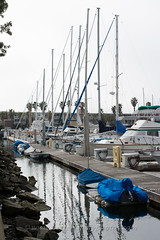 |
| d7100 |
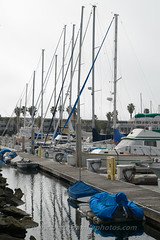 |
| d600 |
SET 2:
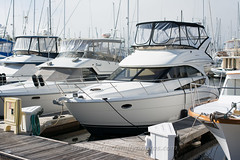 |
| d7100 |
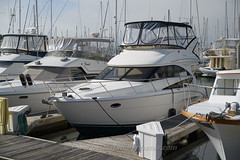 |
| d600 |
SET 3:
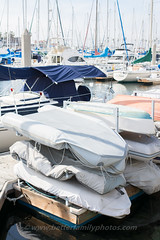 |
| d7100 |
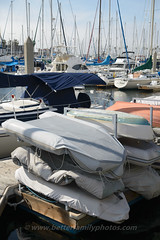 |
| d600 |
SET 4:
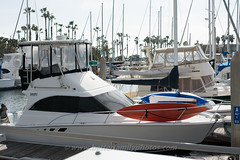 |
| d7100 |
 |
| d600 |
SET 5:
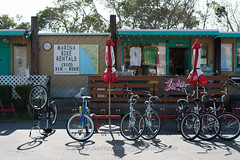 |
| d7100 |
 |
| d600 |
OBSERVATIONS:
Sharpness. To me, the sharpness looks about evenly matched. This is not expected for an APS-C camera, which usually is less sharp than a full frame camera, all other factors being equal (see here). Of course, the lens makes a huge difference here. If I had used a better lens on the D600, such as the Nikon 24-70, the D600 shot would have looked sharper (the Tamron is nowhere close to maximizing the D600's sensor).
Tonality. The tonality is quite different between these two cameras. The highlights on the D7100 are brighter and the shadows in the D600 are deeper, even on shots with identical exposures. Initially I thought it could be the change in light conditions, but the pattern is very consistent and the sharpness of the shadows are identical which implies that the light conditions were the same. Plus, if it's due to the change in light conditions, I would think that the D7100 shot sometimes shows the reverse pattern. But nope - the tonality is consistent in these shots.
I am wondering if this means that the D7100's tonal curve has a longer, softer shoulder (like the Fuji S5 - reviewed here), a quality which I like because it makes the shot more similar to that of negative film. By contrast, the D600's tone curve is known to have almost no shoulder (see DPReview's analysis here) even when Active D-Lighting is turned on. In other words, with the D600, you will see highlights disappear suddenly when they exceed the sensor's highlight range. If indeed the D7100 has a longer shoulder, then highlight rolloff will be smoother and it will not be very obvious when the highlight has disappeared.
Indeed, that appears to be the case. If you look at Set 2, specifically at the sunlit portion of the top of the boat, the D7100 looks like it has more delicate and natural-looking highlights. (See the similarity to the Fuji S5's rendering of the porcelain bowl in our review here.) In part 2 of my D7100 review, you'll see this as well in shots of people.
To some extent either shot can be made to look more similar to the other (as long as the highlights are not blown during capture), but it is interesting to see the cameras' natural tendencies.
RELATED POSTS
Nikon D7100 Hands-On Real World User Review
Importing D7100 Raw Files Into Lightroom
Nikon D7100 Low Light Teaser
Nikon D7100 FAQ and Helpful Links
Nikon D7100 Shadow Recovery
Nikon D7100 Real World Dynamic Range
Nikon D5200 and D7100 Band-Aid: Solutions for Banding
Sample of D7100 banding in a real world shot
Good one ^_^
ReplyDeleteThanks Denniz!
DeleteOn my screen, the D600 images looks more detailed, far better details in highlights and shadows thanks to higher dimanic range of the sensor. Thats why I give as gift a D3100 and a D5100 and go for D600:)
ReplyDeleteHi sme! Sorry for the delayed reply. Yes it seems that more people prefer the D600's rendering of highlights and shadows.
DeleteBest regards,
Mic
Looking at the histograms, the D7100 pics appear over-exposed. If you normalise the exposures, using the histogram, that would be a better comparison since otherwise we are really looking at metering differences.
ReplyDeleteHi thanks very much! I believe the reason for the difference is that the tone curve of the D7100, which stretches out the midtones and compresses the highlights. This is a consistent behavior of the d7100 regardless of with which camera it is compared. If you have a chance to try it out I think you'll see this as well. If not, pls. let me know. Thanks!
DeleteBest regards,
Mic